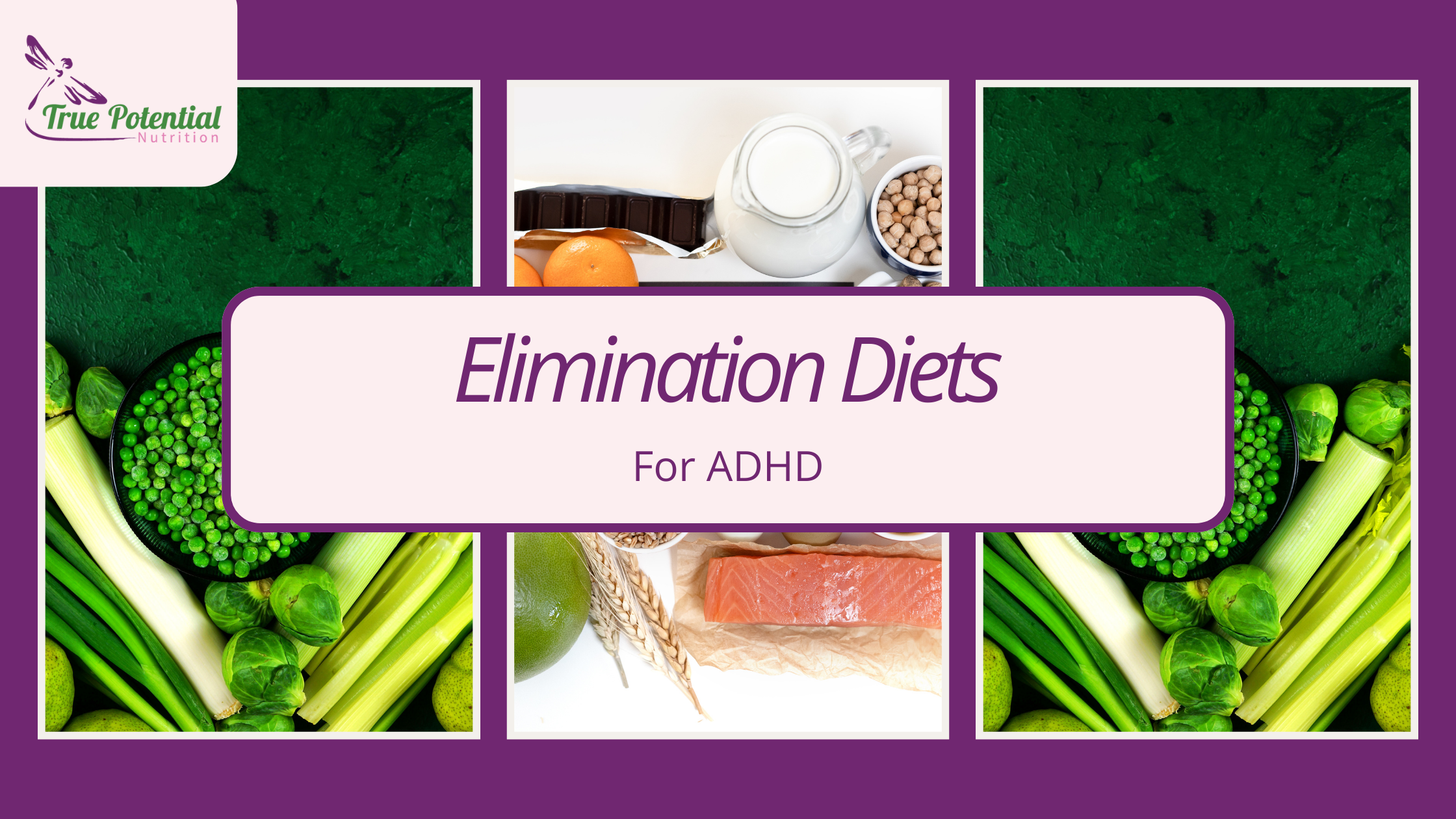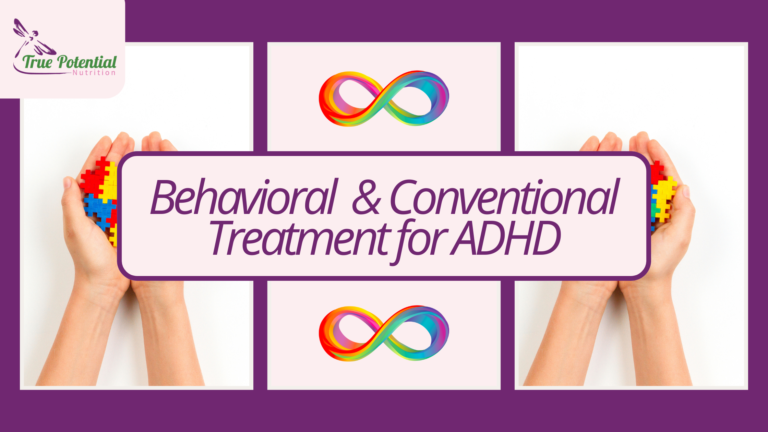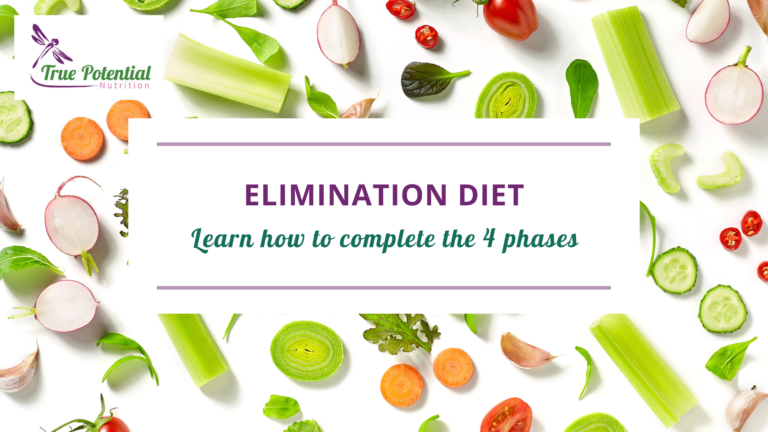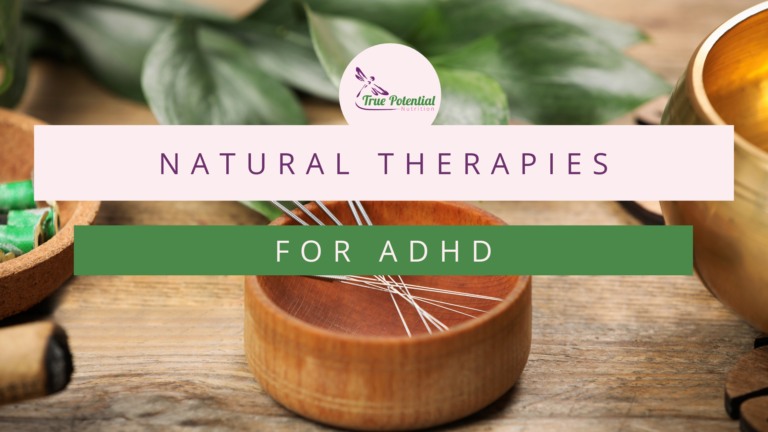By Danielle MacDowell M.S., CNS, LDN, M.Ed, BCBA,

Main Takeaways
- Elimination diets are specialized diets that can be used as a tool to identify foods that cause symptoms.
- Elimination diets may help with behaviors associated with attention hyperactive disorder (ADHD).
- The Feingold diet and the few foods diet are two types of elimination diets used with individuals with ADHD.
- The few foods diet (FFD) has potential at reducing ADHD-related symptoms but is extremely restrictive.
- The Feingold diet may also help with ADHD symptoms but the research is inconsistent. The Feingold diet may be most advantageous for those with allergies/sensitivities to food dyes and preservatives.
What is ADHD?
Attention deficit hyperactive attention (ADHD) disorder is a neurodevelopmental disorder that is characterized by inattention, hyperactivity, and impulsive behavior. The cause of ADHD is largely unknown. However, it is suspected that a combination of genetic and environmental factors contribute to its origin.
What is an Elimination Diet?
Elimination diets are specialized diets that are used as a tool to identify foods that cause symptoms. This is done by eliminating suspected foods from a person’s diet. There are several variations of the elimination diet. However, most elimination diets restrict the top 8 allergens, including:
- Gluten
- Corn
- Dairy
- Eggs
- Tree nuts
- Shellfish
- Soy
- Peanuts
Because elimination diets have been shown to reduce physical symptoms in individuals, there are questions about whether or not these types of diets can have the same impact on behavioral symptoms, especially for those with a diagnosis of attention hyperactive disorder (ADHD) and autism spectrum disorder (ASD).
Elimination diets are specialized diets that are often used as a tool to identify symptom-causing foods. There are questions about whether or not elimination diets can have the same impact on behavioral symptoms in individuals with ADHD and ASD.
Elimination Diets for ADHD
There are two types of elimination diet that are commonly used in individuals with ADHD:
- The few foods diet (aka oligoantigenic diet)
- The Feingold diet (FG).
The few foods diet (FFD) typically consists of foods with “low allergenic potential,” while the FG eliminates all food containing artificial food coloring and additives. Both of these diets have been at the forefront of nutritional research for ADHD. However, the FFD seems to be more promising, as several studies have demonstrated a decrease in ADHD symptoms in those on the FFD. [1-3]
Few Foods Diet and ADHD
While the few foods diet holds promise in reducing ADHD symptoms, it is more restrictive than some of the other elimination diet protocols (hence the name!). So, the decision to adopt this diet should not be taken lightly.
The FFD removes most foods with an “allergenic potential”. Some of these foods include:
- Dairy
- Nuts
- Eggs
- Chocolate. [4]
In some cases, individuals on this diet only eat hypoallergenic foods, such as:
- Turkey
- Pears
- Rice
- Lettuce
Is the Few Foods Diet Right for You or Your Child?
As I mentioned, there are some drawbacks of this diet. So, understanding the length of time someone will need to be on the diet in order for it to be effective will be an important part of the consideration.
If you choose to go on an eliminaton diet (or place your child on this diet), not only do you have to be on the diet for a lengthy period of time (typically 3-6 weeks), but you have to consider the amount of time it will take to reintroduce the foods that you removed.
Yes, I know. This can be A LOT……..
This reintroduction phase can take as long as eighteen months to complete. [4] As I am sure you can imagine, completing this process can be grueling. So, before adopting the FFD, carefully weigh out the pros and cons to determine if it is the best option for you or your loved one. Also, since the diet is so limited, additional supplementation might need to be considered to make sure all nutrient requirements are being met.
Out of all of the researched elimination diets, the few foods diet (FFD) seems to have the most potential at reducing symptoms associated with ADHD. However, it is highly restrictive and time intensive, so pros and cons should be heavily weighed before deciding to move forward with this diet.
Feingold Diet and ADHD
Final Thoughts and Main Takeaways
Elimination diets have been shown to improve somatic complaints, such as headaches, gastrointestinal issues, excessive thirst, fatigue, and sleep disturbances. They may also improve behavioral symptoms in ADHD. When done properly, elimination diets have the potential to improve overall quality of life. However, they must be tailored to the individual and should not be used indiscriminately. If the decision is made to embark on an elimination diet, professional guidance should be sought out because they tend to be cumbersome, lengthy, and may require additional nutritive support.
It is also important to remember that elimination diets are not meant to be utilized as long-term treatment plans. Rather, they are meant to be utilized diagnostically to determine agitating agents in an individual’s diet.
1:1 Consultations and Functional Testing with True Potential Nutrition
I am a functional nutritionist, specializing in gut health, mental health, hormonal health, and neurodiversity. If you are looking for personalized nutrition recommendations or functional testing, visit this link to set up a free discovery call to find out how I can help you reach your health and wellness goals.
*As always, if you are considering making any changes to medications, supplements, diet, or lifestyle, consult with a healthcare professional beforehand.
- Pelsser L, Frankena K, Buitelaar J, Rommelse N. Effects of food on physical and sleep complaints in children with ADHD: a randomised controlled pilot study. European Journal of Pediatrics. 2010; 169:1129-1138.
- Rytter M, Anderson L, Houmann T, Bilenberg N, Hvolby A, Molgaard C, Michaelsen K, Lauritzen L. Diet in the treatment of ADHD in children – a systematic review of the literature. Nord J Psychiatry. 2015; 69:1-18.
- Pelsser LM, Frankena K, Toorman J, Rodrigues Pereira R. Diet and ADHD, Reviewing the Evidence: A Systematic Review of Meta-Analyses of Double-Blind Placebo-Controlled Trials Evaluating the Efficacy of Diet Interventions on the Behavior of Children with ADHD. PLoS One. 2017;12(1):e0169277. Published 2017 Jan 25. doi:10.1371/journal.pone.0169277
- Ly V, Bottelier M, Hoekstra PJ, Arias Vasquez A, Buitelaar JK, Rommelse NN. Elimination diets’ efficacy and mechanisms in attention deficit hyperactivity disorder and autism spectrum disorder. Eur Child Adolesc Psychiatry. 2017;26(9):1067-1079. doi:10.1007/s00787-017-0959-1
- Sonuga-Barke EJ1, Brandeis D, Cortese S, Daley D, Ferrin M, Holtmann M, Stevenson J, Danckaerts M, van der Oord S, Döpfner M, Dittmann RW, Simonoff E, Zuddas A, Banaschewski T, Buitelaar J, Coghill D, Hollis C, Konofal E, Lecendreux M, Wong IC, Sergeant J; European ADHD Guidelines Group. Nonpharmacological interventions for ADHD: systematic review and meta-analyses of randomized controlled trials of dietary and psychological treatments. American Journal of Psychiatry. 2013; 170: 275-289.
- Potera C. The artificial food dye blues. Environ Health Perspect. 2010;118(10):A428. doi:10.1289/ehp.118-a428
- Sari Lehto, Maria Buchweitz, Alexandra Klimm, Raphaela Straßburger, Cato Bechtold & Franz Ulberth (2017) Comparison of food colour regulations in the EU and the US: a review of current provisions, Food Additives & Contaminants: Part A, 34:3, 335-355, DOI: 10.1080/19440049.2016.1274431



